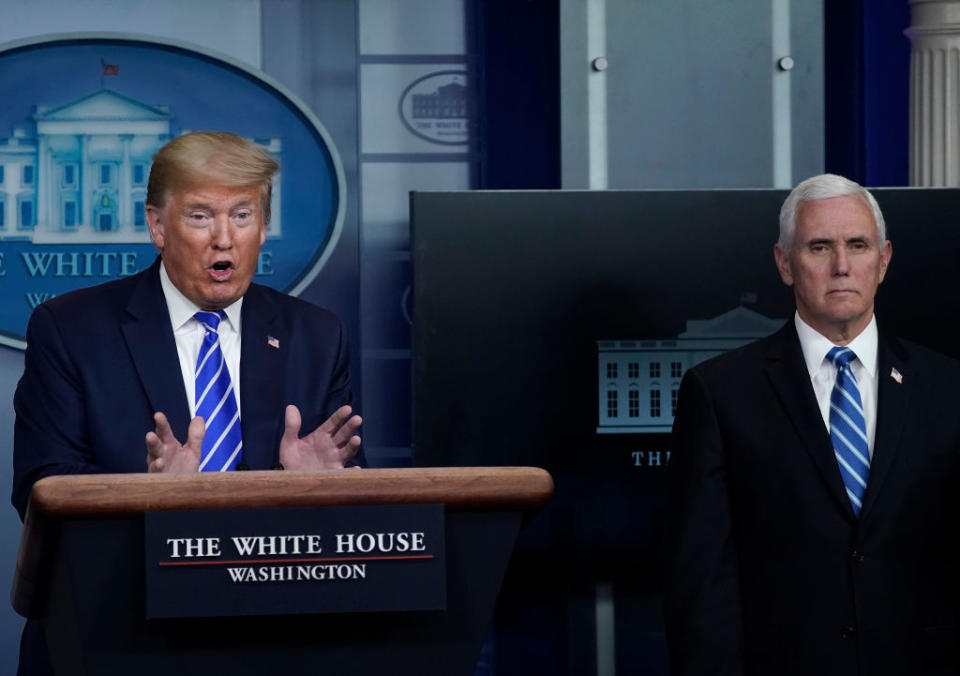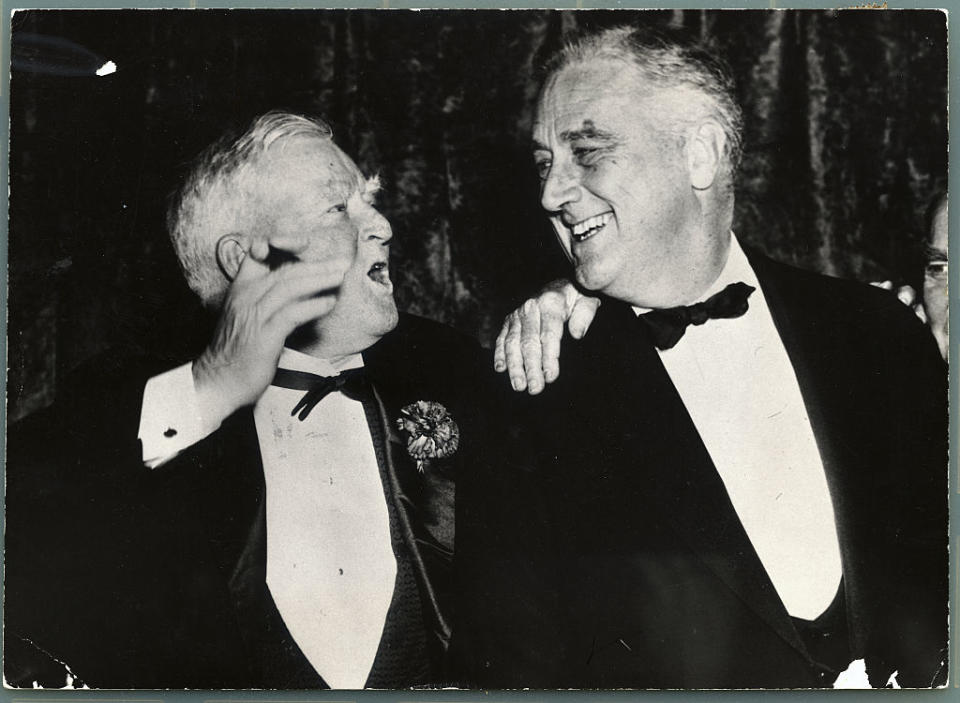Pence Is First VP to Run Against His Former Boss in 83 Years

President Donald Trump speaks while Vice President Mike Pence listens during the daily briefing of the COVID-19 task force at the White House on April 23, 2020. Credit - Drew Angerer—Getty Images
The 2024 presidential campaign field, which already features the first former U.S. President ever to be criminally indicted, is about to get even more unprecedented. On Monday, Mike Pence filed paperwork to run for President, making him the first former Vice President to run against the President under whom he served in over 80 years, and only the third ever to do so. He will hold his first rally on Wednesday in Iowa, where the first Republican primary caucus will be held early next year.
“We haven’t had anything like this before,” says Joel Goldstein, an expert on the history of American Vice Presidents and law professor emeritus at Saint Louis University.
The earliest example of a sitting Vice President challenging a sitting President is arguably the election of 1800, when Thomas Jefferson challenged John Adams. In 1796, John Adams and Thomas Jefferson were elected President and Vice President, though they were leaders of opposite parties. But the electoral system was completely different back then; the candidate with the most votes was elected President, and the candidate with the second most votes became Vice President. The 12th Amendment got rid of that system in 1804.
The closer parallel to the Trump-Pence situation is when President Franklin Delano Roosevelt ran for a third term in 1940, and Vice President John Nance Garner challenged him for the Democratic nomination. Six years into the job, Garner—a Texan nicknamed “Cactus Jack”—came to represent a group of conservative Democrats who had grown disenchanted with FDR’s liberal New Deal, which they believed expanded the role of the federal government too much. Nancy Beck Young, professor of History at the University of Houston, who consulted on a PBS documentary about Garner, tells TIME that Garner’s “biggest” concerns were that the federal government was supporting auto workers striking against General Motors in Michigan and deficit spending, which he said needed to be reigned in. Garner also opposed FDR’s effort to increase the number of justices on the U.S. Supreme Court.

TIME magazine summed up the tensions in a Mar. 20, 1939, cover story on the intraparty split headlined “undeclared war”: “Party rebellion is no new thing in U.S. history…Rebellion by the substantial leaders of a party against their leader-in-chief is rarer. And the rebellion which John Nance Garner now leads is rarer still in that it is, save in small things, almost intangible—less a rebellion than a resistance. It is nonetheless the biggest political struggle now going on in Washington.”
At the 1940 Democratic National Convention, FDR received 946 of the delegate votes, while Garner received 61. “At the end of the day, Garner’s challenge to FDR was not substantive,” as Young puts it. Since the Nazis invaded Poland in September 1939, World War II was ramping up, and FDR’s two terms as commander-in-chief made him the clear frontrunner. FDR was re-elected with Henry Wallace as his running mate, and Garner retired from public life.
More from TIME
Pence was the governor of Indiana when Trump asked him to be his running mate in 2016. The public split between the two men happened near the end of Trump’s term, amid his efforts to overturn Joe Biden’s election victory. Citing false claims of voter fraud, Trump asked Pence not to perform his constitutional duty and certify the 2020 election results on Jan. 6, 2021. Pence insisted he had no legal power to comply Trump’s request, and as a riot of Trump supporters broke out at the Capitol, some chanted “Hang Mike Pence.”
Read more: Why Pence Is Launching His Campaign in Iowa and Christie in New Hampshire
While Trump and Pence are both running to return to the White House, the race between Garner and FDR was different as both were running against each other while still in office. In addition, FDR was running for a third term—before the 22nd Amendment made that illegal in 1951—while Trump is eligible to serve a second term.
Some analysts have called Pence’s presidential bid a longshot. Goldstein says Vice Presidents who run for President are in a unique position, arguing, “most Vice Presidents may have problems running for President. You inherit the baggage of your administration. You’re perceived as being a follower, not a leader. But one of the advantages is that you tend to inherit the support of people in the administration and the supporters of the President.”
With reporting by Melissa August

 Yahoo Sports
Yahoo Sports 